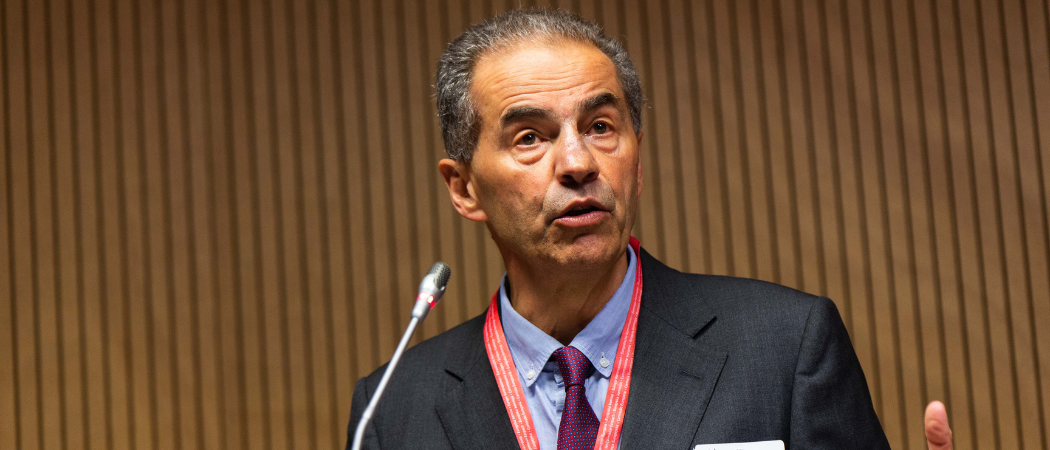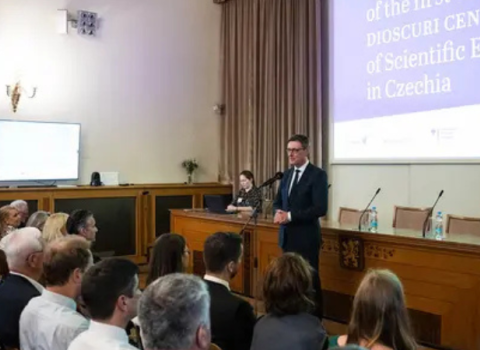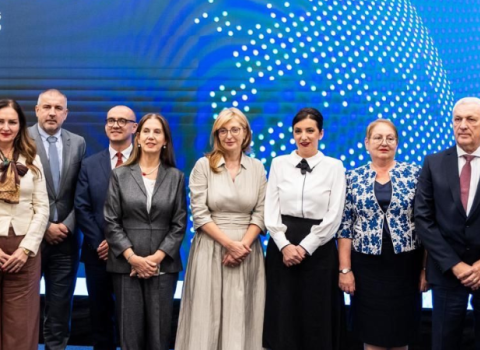The Widening programme is too complicated. It needs to be restructured and to have a more inspiring name, but it should remain part of FP10

Portugal’s former science minister Manuel Heitor during the publication event of the High-Level Group report on the mid-term review of Horizon Europe on October 16, 2024, in Brussels, Belgium. Photo credits: Bogdan Hoyaux / European Union
The Widening programme should be restructured in Framework Programme 10 so it has fewer instruments, is easier to use and more effective, according to 15 experts in their report to European Commission on the future of EU research funding.
Alongside this restructuring, the report recommends Widening is renamed ‘Advancing Europe’.
Since it was set up in Horizon 2020 in a bid to close the east-west divide in research, the Widening programme has helped many researchers, institutions and countries lift themselves in EU research competitions. But it is increasingly characterised by “more and more programmes with less and less spending,” said Manuel Heitor, former science minister of Portugal and chair of the expert group.
“If we have still a low budget, we need to concentrate on the best initiatives, like teaming or the Marie Curie staff exchange,” Heitor told Science|Business ahead of publication of the report last week.
However, unlike others who say Widening should be run by another EU fund, Heitor rejects proposals to move it out of the research programme.
Daniel David, rector of Babeș Bolyai University in Romania told Science|Business the number of funding instruments is not good or bad in itself. “It depends how these schemes are coordinated and if they cover the needs” of researchers in the 15 Widening countries.
Overall, David says the Widening programme should focus on excellence and support funding schemes which are proved efficient, but be open to other innovative developments if necessary.
At the same time, the programme should be better coordinated with national and EU funding opportunities, David said.
The Heitor report also wants to see greater alignment of national and EU funds, saying the European Semester, the EU’s main policy tool for coordinating economic and fiscal policy, should be given responsibility for reviewing public and private RD&I spending in member states, including money coming to research from EU structural funds.
And while saying there are too many instruments, the Heitor report recommends the introduction of a new a pre-accelerator programme under the European Innovation Council (EIC), to address the low success rate of start-ups in Widening countries in winning EIC funding.
It turns out that the Commission is working on such a scheme, with plans to roll out the first call for €20 million of pre-accelerator funding early next year.
The Heitor report also reiterates previous calls for member states to route national or European structural funds to projects that fail to get funding from the EU framework programme, but which do receive a ‘seal of excellence’.
“There is a need to better use seals of excellence […] which have not been used in most European countries, with two exceptions: Lithuania and Malta,” Heitor said.
David agrees the seal of excellence is a good idea as it reflects the quality of proposals per se, and also the quality of the work that goes into writing them by private investigators, reviewers and administrators. “We need more work to encourage various countries to use it, even maybe by including it in various academic evaluation schemes,” he said.
David is also in favour of the proposed renaming of the Widening programme. The moniker is not very popular in the research and innovation community because it is seen as speaking a two-speed Europe, divided between innovators and laggards. It is even the case that some of the policymakers involved in the design of the programme do not like the name.
“Changing the name to Advancing Europe could be a good idea, as long as we do not lose focus on the needs of Widening countries,” said David.
Geographical disparities
The Heitor report reiterates previous calls for member states to increase national expenditure on research and innovation to 3% of GDP. It also recommends that Widening actions should be linked to increased national investment, and for a technology monitoring initiative, to promote investment in the technologies of the future.
The 3% of GDP target for national R&D spending is one of the main goals of the European Research Area, an attempt by the EU to create a single market for research and innovation, which would reduce geographical disparities in research and innovation performance and slow down brain drain. The policy received a significant boost when it was pushed high up the political agenda by former EU commissioner Mariya Gabriel, but progress has been slow.
According to a Commission analysis of progress published on Tuesday, the EU “is still far” from reaching the 3% target, mainly due to a low level of private investment. The Commission admits it needs to do more to ensure researchers in Widening countries are aware of dedicated funding opportunities. “More work is needed to reduce bureaucracy and provide better information on available opportunities for researchers,” it says.
But the main problem is that the ERA process is largely voluntary and member states can pick and choose which targets to pursue and which to leave out.
“The fact that significant disparities remain in research and innovation performance across Europe is clear evidence of the limitations of this approach,” said Mattias Bjornmalm, secretary general of CESAER. “Europe needs to move beyond a fragmented and voluntary approach.”





 A unique international forum for public research organisations and companies to connect their external engagement with strategic interests around their R&D system.
A unique international forum for public research organisations and companies to connect their external engagement with strategic interests around their R&D system.